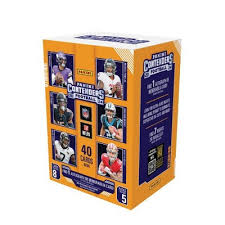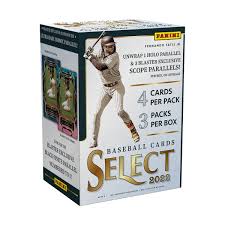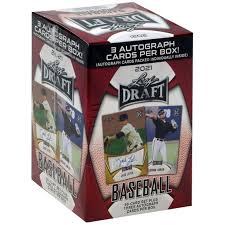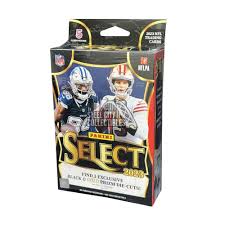

Spring training is an emotional time for baseball fans. The first taste of a new baseball season comes out of Florida and Arizona, often to fans in parts of the country still firmly in winter’s icy grip. Hope springs eternal as players prepare for the season with lazy workout and early games in front of groups of small crowds. It’s easy to get excited about it all.
But when it comes to investing in baseball cards, should you let that excitement drive your decisions? Or are there cases where you should hold off on diving into the cardboard offerings of the latest Spring Training superstar opening for the same results come Opening Day?
Let’s talk about spring training and card values, and what you should know.
Major League Spring Training is the pre-season training camp that starts in mid-February and ends just before Opening Day. It’s a chance for players to round back into the swing of things on the field before the games start for real, as well as allow teams to make roster decisions on players.
Fans get a chance to get their first glimpses of newly acquired players and top prospects, providing the perfect chance to dream about the upcoming season.
Training camp starts slowly, with workouts at the camps, which are split across Florida and Arizona. After a few weeks, though, teams begin to scrimmage against other teams in their training region. These scrimmages don’t count towards regular season stats or standings, but statistics are kept and reported in the media.
Since hope springs eternal in the pre-season, reports of players being “in the best shape in their life” or having worked on some new pitch, approach, or other skill over the off season can excite fans and card collectors alike.

The MLB season, at 162 games, is many times longer than the NFL season and twice as long as the NBA and NHL regular seasons. Over the long season, players from the biggest stars to the fringiest role player go through ebbs and flows in their performance.
Usually, your league-average second baseman or mid-innings reliever having a hot stretch of a week or two goes unnoticed and quick regression to the mean brings their statistics back in line with career norms.
In some scenarios, however, fans, collectors, and the media pay more attention to these hot streaks. If they happen to be to start the season, for example, or if they happen in the playoffs. These tend to draw an unreasonable amount of attention and more value is put on them than is wise.
But baseball isn’t the NFL, and one game, even a no-hitter or four-homer game, is going to dramatically effect a player’s card value over the long term.
Spring Training statistics can fall into this category. A dozen or so at bats over a few lazy scrimmage games in the southern sun draw the attention of folks who are hungry for baseball and may get over-analyzed and overvalued.
When considering investments, be wary of small sample sizes, whether they are a hot streak or a cold streak. Don’t go crazy investing in the 30 year old journeyman who’s having a strong spring, and don’t dump all your Mike Trout cards if he hits .200 in spring training. Remember, MLB isn’t the NFL, and one good game isn’t what it is in that league.
As an aside, Spring Training can be a nice way to see your favorite teams and players in a more casual and up close manner. It can also be a great way to collect in-person autographs.

In addition to the standard small sample size considerations one should always keep in mind when considering card investments, there are a number of other things to keep in mind specific to spring training and card investments.
These include:

With all the above said, can spring training give us anything worth acting on from a card investment perspective? Certainly. Good performance, while perhaps with small sample size or another of the above mentioned drivers, is still better than poor performance. A player holding their own at least will perhaps validate some prior investment decisions you’ve made.
One negative that can happen in spring training is injuries. A player heading to see an elbow specialist or suffering an injury with a long recovery period can certainly hurt a player’s card value in the short to mid-term. This may be a driver to dump a player, or an opportunity to buy the dip, depending on the situation.
An injury can also open up a spot for another player, perhaps a top prospect, to break camp with the team instead of heading back to the minors. This may present the best “buy” opportunity. A player getting a chance to make their big league debut can drive demand in their cards in a serious way, especially if they have immediate success.
Knowing what player is getting their chance vs. those that will be waiting in the wings in the minors a bit longer can be hugely useful information when making purchasing decisions.

Spring Training is a time when hope springs eternal. But it shouldn’t be a time for irrational exuberance. Don’t get carried away with Spring Training performance when considering spending your hard-earned collecting budget. While it can offer some clues, it’s important to know what to look for and what is likely to evaporate when teams travel back north for Opening Day.
What’s your take on Spring Training performance? What prospects are you looking to get a look at this spring? And who do you think players to watch may be? Tell us about it at card_lines on Twitter.
I deep-dove on Fanatics Collect so you don't have to (but should you?)
Panini is launching a WNBA Product at $30,000!?
Topps Chrome 2024-25 Basketball: Honest Review and Notes
Did you know this SECRET about PSA slabs? #sportscard #tcg
5 EASY tips to make more money on eBay sports cards.
I opened a sports card mystery box and found something AWESOME inside
The SAD story of Collectable. What went wrong? (The Downfall Fractional Sports Card Investing)
what was Panini doing? 🙄





2022 Topps Heritage Baseball Blaster Box Configuration: 7 Packs per Box – 9 Cards per Box. Plus 1 extra pack.











Keep up on breaking Sports Card News, our latest articles, product specials and exclusive content with expert analysis of hobby trends.

© Copyright 2025 - All rights reserved Cardlines.com / Media Techs LLC - Sports Card News, Reviews, Releases and BREAKS - #thehobby.
Important: When you click on links to various merchants on this site and make a purchase, this can result in this site earning a commission. Affiliate programs and affiliations include, but are not limited to, the eBay Partner Network.
I Tested eBay Auction Promotions So You Don’t Have To!
Cardlines June 30, 2025 7:01 pm